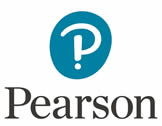
Molti manager, considerata la loro posizione, al giorno d’oggi devono non solo svolgere in maniera impeccabile il proprio lavoro e coordinare il proprio team, ma spesso anche comunicare in modo efficace. Le doti di speaker sono sempre più richieste in ambito business, per presentare un report, un nuovo progetto o una nuova idea a diversi pubblici.
Come imparare a fare Public Speaking in inglese? Come strutturare il proprio speech per trasmettere sicurezza, fiducia e per rafforzare la propria leadership? Ecco alcuni utili consigli e le frasi più adatte da impiegare.
Consigli per il Public Speaking in inglese
Se l’inglese non è la tua lingua madre, imparare ad essere sciolto e disinvolto durante il tuo speech richiede un grande lavoro di preparazione e concentrazione. Noi abbiamo alcune indicazioni da darti:
- Prepara il tuo speech con cura
Documentati a fondo sull’argomento, metti per iscritto il testo del tuo discorso e preparati una scaletta da tenere sott’occhio al momento dell’esposizione: ti aiuterà a non fare errori
- Utilizza efficaci supporti visivi
Scegli immagini accattivanti, slide curate e in generale supporti visivi che aiutino il pubblico a visualizzare ciò che stai dicendo.
- Usa esempi, citazioni, numeri e aneddoti
Le persone, più che mille discorsi, vogliono fatti. Movimenta il tuo speech inserendo esempi, aneddoti, citazioni e numeri.
- Cura particolarmente l’introduzione
L’attenzione del pubblico è massima nei primi minuti, poi tende naturalmente a scemare, soprattutto se chi ascolta non trova interessante l’inizio del discorso: ecco perché devi preparare con particolare cura la tua introduzione, magari utilizzando frasi ad effetto, domande e battute. Se inizi col botto, anche la tua tensione calerà subito e ti permetterà di essere più sciolto per il tempo restante.
- Modula il tono nelle diverse parti del discorso
Impara a comunicare, oltre che con le parole, anche attraverso il tono di voce, ponendo l’accento sui passaggi più significativi e “giocando” con il ritmo.
- Non parlare troppo velocemente
La tensione potrebbe portarti a parlare troppo velocemente, facendo perdere a chi ti ascolta passaggi importanti. Cerca di parlare invece in modo lento, mantenendo la calma.
Se vuoi metti subito alla prova il tuo inglese con uno dei nostri test dedicati al Business English:
Come strutturare il tuo speech
Ecco gli elementi principali che non possono mancare nel tuo speech, con alcune frasi che puoi utilizzare riadattandole ovviamente al contesto.
Benvenuto
All’inizio devi dare il benvenuto al tuo pubblico, in modo più o meno formale.
- Good morning/afternoon/evening, ladies and gentlemen/everyone. On behalf of (nome della tua azienda) allow me to extend a warm welcome to you.
- Hello, everyone. Welcome to (titolo dell’evento).
Presentazioni
A questo punto devi presentarti, dire chi sei.
- First, let me introduce myself. My name is “John Miller” and I am the “Position” of “Company X”.
- Let me briefly introduce myself. I’m (nome) from (azienda)
Introdurre l’argomento e i tuoi obiettivi
- I am delighted to be here today to talk to you about…
- I’d like to give you a brief breakdown of…
- I would like to take this opportunity to talk to you about…
- My objective today is…
- The purpose of this presentation is…
Iniziare il discorso
- Let me begin by explaining why/how…
- Ready? Let’s go! I think everybody has heard about…, but hardly anyone knows a lot about it.
- Let me start with some general information on…
Fare esempi e citare dati, studi e immagini
- As an illustration,…
- A good example of this is…
- Our data show/indicate…
- I’d like to illustrate this point by showing you…
- Let the pictures speak for themselves.
Le domande… durante lo speech
Il pubblico potrebbe avere dubbi o domande mentre stai parlando. Di tanto, in tanto, lascia la possibilità di esprimerli:
- Please feel free to interrupt me if you have questions.
- If there are no further questions or comments at this point, I’d like to…
- Do you have any questions before I move on?
… e alla fine
- I am happy to answer your questions now.
- That’s all. Now if you have any questions, please don’t hesitate to ask.
Possibili risposte
- I hope this explains the situation for you.
- Did I make myself clear?
- That’s a very good question. However, I don’t have any figures on that, so I can’t give you an accurate answer.
- Unfortunately, I’m not the best person to answer that.
- Good question. The truth is I really don’t know! What do you think?
Conclusione
Anche la conclusione è una sezione di estrema importanza nel tuo speech: per fare colpo sul tuo pubblico, e far sì che ciò che hai comunicato rimanga impresso nella loro mente, devi concludere “con il botto”, utilizzando frasi ad effetto, citazioni o espressioni originali. Ecco alcuni esempi di frasi per introdurre le tue conclusioni:
- Let me end by saying...
- I’d like to finish by emphasizing…
- We have arrived, now, where we began.
- So what can we do now?
- Remember that man I told you about at the beginning? Well, now he’s a heart surgeon. Nothing is impossible.
- More than 450 years before the birth of Christ, Confucius said: ‘What I hear, I forget; what I see, I remember; what I do, I understand’. Let’s do it together. We’ve heard what we have to do. We’ve seen what we need to do. Now is the time to do it, and, together, we can do it.
- This year we have lost our old company in a very special way. Now we are moving on to a stronger, more mature company.
- We need to look at this old issue in a new way, not simply for today but to make our tomorrow more rewarding, more fulfilling, and more compelling because of the change we make today. With your help, we can think anew and act anew on this issue.
Se hai sempre sognato di lavorare in un contesto internazionale questo è l'e-book che fa per te! Scaricalo subito e metti alla prova il tuo Business English con le espressioni più comuni utilizzate nelle multinazionali






